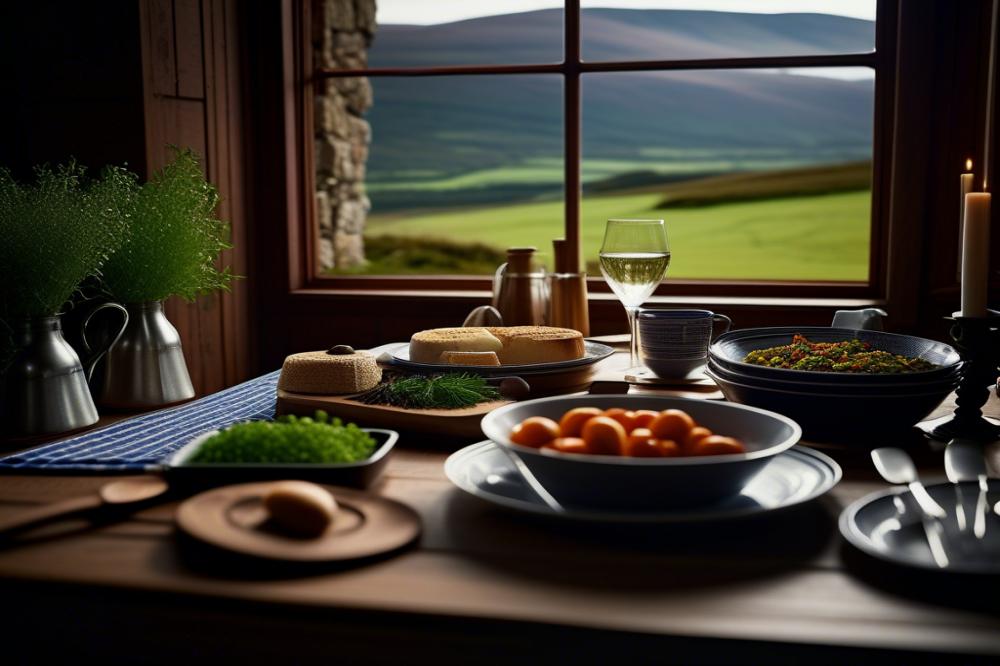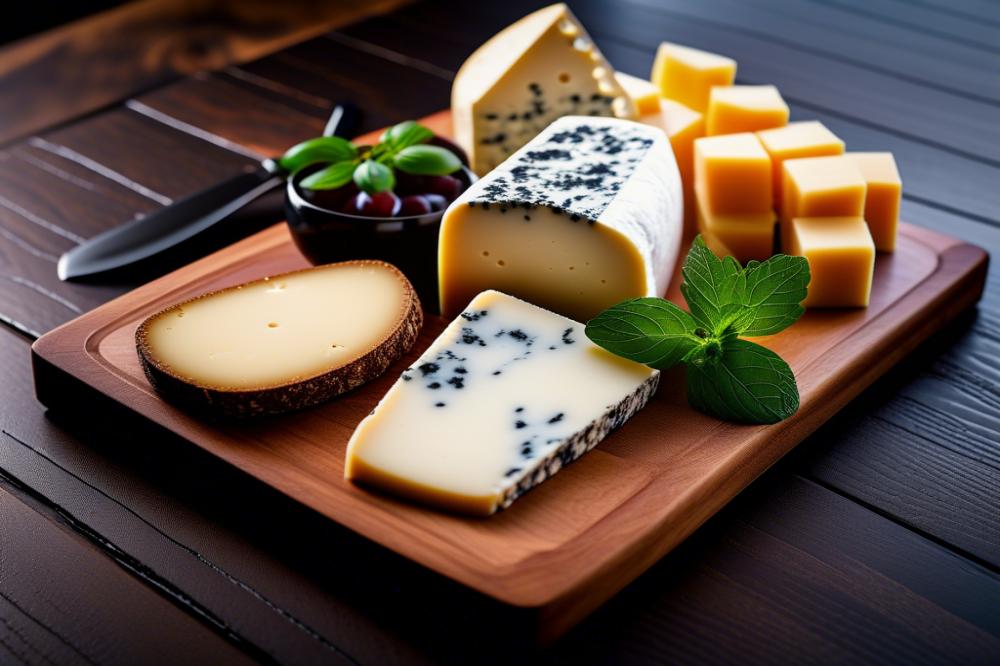Introduction
Black Crowdie is more than just a cheese; it is a delicious slice of Scottish history. This traditional Scottish cheese has deep roots in the culture and heritage of Scotland. Crafted from fresh milk, it is known for its soft, creamy texture and a distinct flavor that many find irresistible. Its origins trace back centuries, making it a staple in Scottish homes.
Significance in the culinary world cannot be overstated. The flavor of Black Crowdie is reflective of the region’s landscape and farming practices. It represents a combination of local ingredients and traditional methods. Generations of farmers have passed down the recipes, creating a strong connection to the past. Eating this cheese offers a taste of Scotland’s rich cultural tapestry.
What truly sets this cheese apart is how it intertwines history and flavor. Each bite delivers not just a taste but a story. It evokes memories of ancient Scottish traditions while celebrating the everyday life of its people. By enjoying Black Crowdie, you are savoring a piece of heritage. The fusion of history and gastronomy makes it a vital part of Scotland’s identity.
In essence, Black Crowdie connects the past with the present. This delightful Scottish cheese is a must-try for anyone interested in the flavors of Scotland. Enjoying it allows you to experience a legacy that is both rich and flavorful.
Black Crowdie

Black Crowdie is a soft, traditional Scottish cheese made from cow’s milk. This creamy delight has a crumbly texture and a taste that is both tangy and slightly sweet. Often enjoyed fresh, it is a staple in many Scottish households. Lovers of cheese appreciate its versatility, as it can be spread onto bread or used in various dishes.
Origins and Historical Context
This cheese has roots tracing back to the Scottish Highlands. Originally crafted by rural communities, its production involved simple techniques passed down through generations. Farmers created it as a way to use excess milk, helping to prevent waste. Over time, Black Crowdie evolved. It is now celebrated as part of Scotland’s rich culinary history and cultural heritage.
Unique Characteristics and Flavor Profile
The aesthetic of this cheese is striking. Its appearance features a mottled white interior and a yellowish rind that hints at its age. Flavor-wise, it exhibits a herbal undertone, making it distinct from many other cheeses. The addition of herbs like dill or chives can elevate its taste, bringing a fresh burst with every bite. Texturally, the cheese is both crumbly and creamy, providing an engaging mouthfeel that complements its rich flavors.
Comparison with Other Types of Scottish Cheese
When compared to other Scottish varieties, Black Crowdie stands out. Unlike the sharper, more pungent taste of Stilton, this cheese offers a milder experience. Similarly, it deviates from the hard, aged texture of Cheddar. While both have their place, Black Crowdie provides a refreshing contrast. Many cheese enthusiasts find themselves drawn to its softer, smoother qualities.
Scottish Cheese

Scotland boasts an impressive variety of cheeses. From crumbly blue varieties to creamy soft cheeses, each type has its own distinct taste. Cheddar from the West Country is famous, while rich varieties like Strathdon Blue bring an exciting twist. Traditional favorites include the smooth texture of Brie-style cheeses. These flavors tell a story of their origins, showcasing Scotland’s diverse landscape.
Local ingredients play a key role in creating authentic Scottish cheeses. Farmers take pride in using milk from local cows and goats. This commitment to local sourcing helps maintain quality. Seasonal changes also influence the flavors. Spring brings sweet grass, while winter results in richer milk. The environment shapes the cheese, creating a deep connection between food and place.
Scottish cheeses find a place in both traditional and modern cuisine. In classic recipes, these cheeses are often paired with oatcakes or served with chutneys. Contemporary chefs experiment, highlighting their flavors in gourmet dishes. Cheeses provide a delightful contrast to sweet ingredients. They can elevate a simple salad or enhance a sophisticated cheese board. Today, people are rediscovering and embracing the rich flavors of Scottish cheeses.
Black Crowdie Recipe

Ingredients
- 250g Black Crowdie cheese
- 100g soft cheese (like cream cheese)
- 1 tablespoon of chopped chives
- 1 tablespoon of chopped dill
- Salt and pepper to taste
- Optional: toasted bread or oatcakes for serving
Instructions
- Start by placing the Black Crowdie cheese in a mixing bowl, along with the soft cheese.
- Add in the chopped chives and dill for extra flavor.
- Season this mixture with salt and pepper to match your taste.
- Mix all the ingredients until they become smooth and well integrated.
- Serve the blend with toasted bread or oatcakes as a delightful spread.
Nutritional Information
This simple recipe offers a range of nutrients. It contains approximately 250 calories per serving. The breakdown includes proteins from the cheese and healthy fats, which are essential for energy.
Health Benefits
One benefit of this dish is its protein content, which helps in maintaining muscle and supports overall body functions. Calcium from the cheese is vital for strong bones and teeth.
Beyond dairy, the herbs used in the recipe also add health benefits. Chives are known for their antioxidants, while dill has digestive properties. Together, they enhance the flavors and provide extra nutritional value.
Embracing Flavor Through History
Black Crowdie stands as a testament to the rich tapestry of Scottish culinary traditions. Its creation links modern palates to the storied past of Scotland, reminding us that every taste has a tale. Each bite is not just food; it’s a piece of history that invites you to savor the experiences of those who came before us.
Exploring Scottish cheeses can open your taste buds to a world of flavors. There’s a wide variety to discover, from the crumbly textures to the creamy sensations that dance on your tongue. Every cheese tells a story and reflects the landscape of its origin. For anyone eager to expand their culinary horizons, this is an adventure worth taking.
Incorporating history into every meal enriches our understanding and appreciation of food. Culinary traditions thrive on the stories behind them, and when we embrace these narratives, our meals become more meaningful. So, step beyond the ordinary and venture into the delightful complexities of Scotland’s cheese heritage. Your palate will thank you for it!



